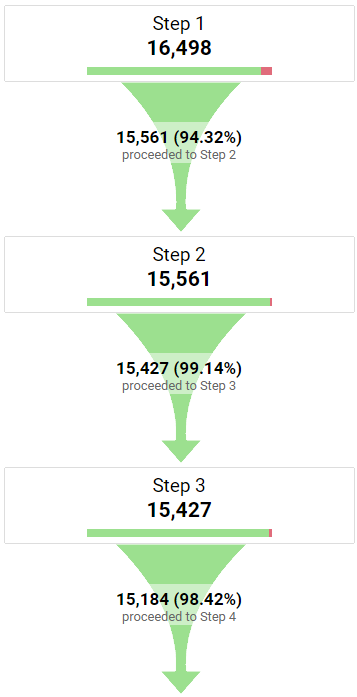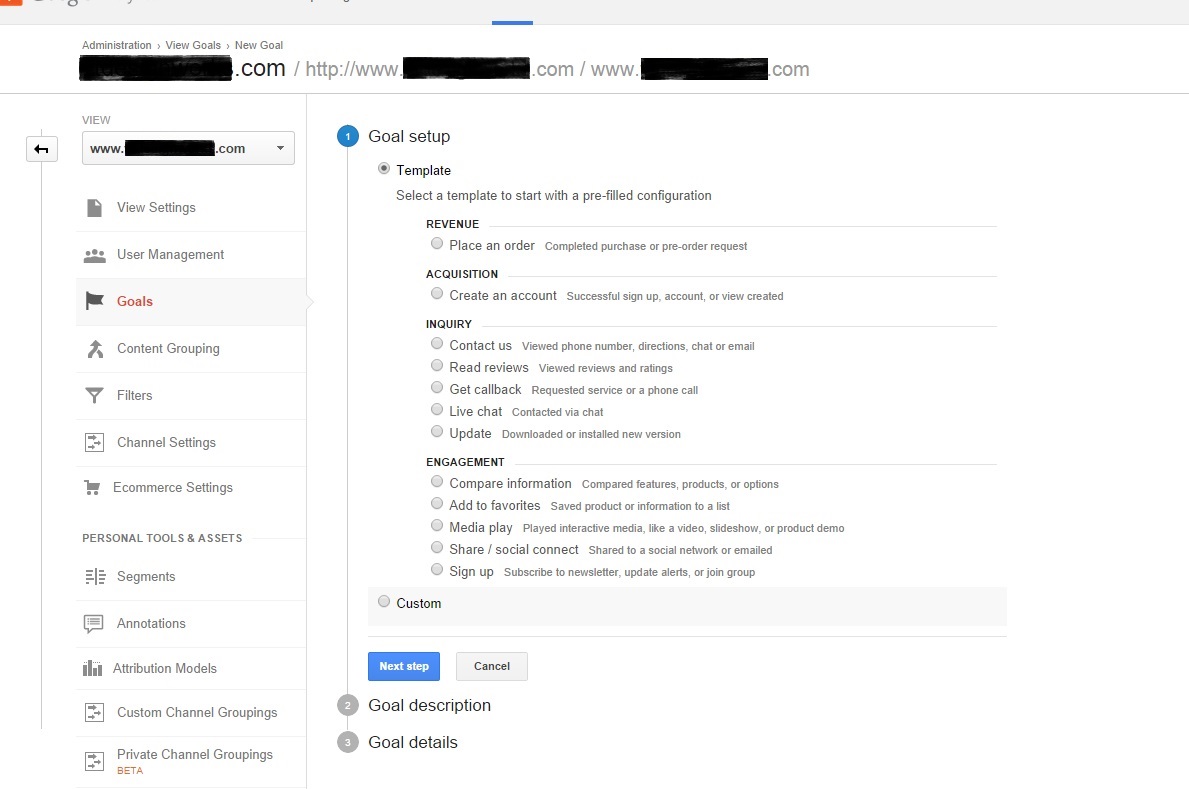What Data Is Google Analytics Goals Unable to Track: Find Out the Limitations
What Data Is Google Analytics Goals Unable to Track: Find Out the Limitations
Blog Article
Debunking Google Analytics Limitations: Discover What Information Goals Can not Track
In the realm of digital analytics, Google Analytics stands as an effective device that supplies useful understandings right into web site performance and customer behavior. Among its capacities, there exist restrictions that frequently go unnoticed. Understanding what Google Analytics can not track is important for an extensive understanding of information interpretation and decision-making processes. From the complexities of user communication with dynamic web content to the complexities of cross-device customer trips, these restrictions clarified areas that may remain covered from typical analytics perspectives. By deciphering these restraints, a clearer image emerges, permitting even more informed approaches and fine-tuned understandings right into customer interaction and conversions.

User Interaction With Dynamic Material
Customer communication with dynamic material plays a crucial duty in recognizing individual actions on websites and enhancing the total individual experience. Dynamic web content refers to aspects on a web page that can transform without the need for a full page reload. This consists of interactive elements such as pop-ups, sliders, types, and videos that react to user actions in real-time. By tracking user interactions with dynamic material, web site proprietors can acquire valuable understandings right into customer interaction, choices, and behaviors.
Google Analytics supplies numerous devices to track individual interactions with dynamic material, such as event tracking and virtual pageviews. Occasion monitoring enables you to keep track of particular user activities, like clicking a switch or seeing a video clip, giving information on just how individuals connect with vibrant components. Online pageviews can be used to track interactions that do not bring about a new page load, giving a thorough sight of customer involvement with dynamic content. By evaluating this information, site owners can make educated decisions to boost customer experience and drive conversions.
Cross-Device Individual Journeys
Just how can contemporary analytics devices track the facility courses individuals take across numerous devices in their on-line journeys? Cross-device individual trips present a substantial difficulty for tracking and assessing individual actions accurately. As individuals interact with websites or apps utilizing numerous gadgets such as desktops, tablets, and smart devices, it ends up being important to recognize just how they move between these systems to maximize user experience efficiently.
Google Analytics faces constraints in tracking cross-device individual journeys because of personal privacy worries and technical restrictions - what data is google analytics goals unable to track. While it can supply insights into individual gadgets' communications, tracking a smooth customer trip across multiple gadgets stays a difficulty. This restriction can lead to incomplete information and fragmented individual insights, making it challenging for services to produce a unified view of the customer journey
To resolve this issue, companies can make use of innovative analytics tools that supply cross-device monitoring abilities, enabling them to acquire a more all natural understanding of individual habits. By leveraging these tools, companies can bridge the void in tracking cross-device individual journeys and maximize their digital methods for a seamless customer experience.
Offline Conversions and Attribution
As businesses navigate the difficulties of tracking cross-device customer journeys, an additional essential aspect to consider is the realm of offline conversions and acknowledgment in the realm of data analytics. While Google Analytics provides valuable understandings into on the internet user habits, it fails when it involves tracking conversions that occur offline. This constraint positions a significant difficulty for businesses that have both online and offline sales networks.
Offline conversions, such as purchases made in physical stores or via phone call centers, are vital to recognizing the complete client trip. Without the capability to attribute these offline conversions to details online communications, organizations may have a hard time to precisely determine the effect of their electronic marketing initiatives.
To address this space, companies find out can check out different solutions such as incorporating CRM systems with on-line analytics tools or utilizing special coupon codes that can be mapped back to on the internet projects. By connecting the space in between online and offline data, businesses can get a more comprehensive understanding of their customers' behavior and improve their total marketing approaches.
Individual Individual Recognition
In the realm of data analytics, the capacity to accurately determine private customers throughout numerous online touchpoints is an essential challenge for companies looking for to personalize and optimize their marketing strategies. While Google Analytics offers beneficial understandings into user behavior and communications, it drops short in allowing the identification of specific individuals due to personal try this site privacy issues and technical limitations. Google Analytics uses unique identifiers such as cookies to track customer sessions and actions, but these do not equate to recognizing specific customers in a personal sense.

Information From Secure Pages
Despite the raising occurrence of secure web pages on web sites, acquiring information from these encrypted sources offers a distinct obstacle for digital analytics platforms like Google Analytics. Secure web pages, indicated by HTTPS in the link, secure information traded in between the individual's internet browser and the website's web server to make certain personal privacy and security. While this file encryption is vital for shielding sensitive information, it additionally poses limitations for tracking individual actions and gathering analytics information.
Google Analytics deals with barriers in collecting comprehensive details from secure web pages due to the file encryption methods in position. Consequently, specific data factors such as reference resources, keyword searches, and even some user interactions might not be fully caught when customers access a site with a safe and secure link. This limitation can affect the precision and completeness of the information analysis, leading to spaces in recognizing user behavior and choices on secure pages.
To navigate this challenge, digital analysts may need to check out alternate monitoring techniques or take advantage of various other devices specifically developed to gather insights advice from secure pages. By adapting methods to suit these constraints, organizations can still acquire beneficial analytics regardless of the constraints presented by encrypted connections.
Final Thought
Finally, Google Analytics has constraints in tracking individual communication with dynamic material, cross-device user trips, offline conversions, specific user identification, and information from safe and secure web pages. These limitations hinder a detailed understanding of customer behavior and might cause spaces in data evaluation. In spite of its useful insights, Google Analytics may not give a total picture of user engagement throughout different touchpoints. It is necessary for companies to be knowledgeable about these constraints and take into consideration auxiliary devices for a more all natural view of their data.
User communication with vibrant content plays a vital role in understanding customer habits on internet sites and enhancing the total user experience. By tracking user interactions with vibrant material, website owners can obtain useful understandings into user interaction, choices, and habits.
Google Analytics uses special identifiers such as cookies to track customer sessions and behavior, but these do not correspond to recognizing specific customers in a personal sense.
As an outcome, particular information points such as referral resources, keyword searches, and even some customer interactions may not be totally captured when users access an internet site through a secure link.In verdict, Google Analytics has restrictions in tracking customer communication with vibrant web content, cross-device user trips, offline conversions, private customer recognition, and data from secure web pages.
Report this page